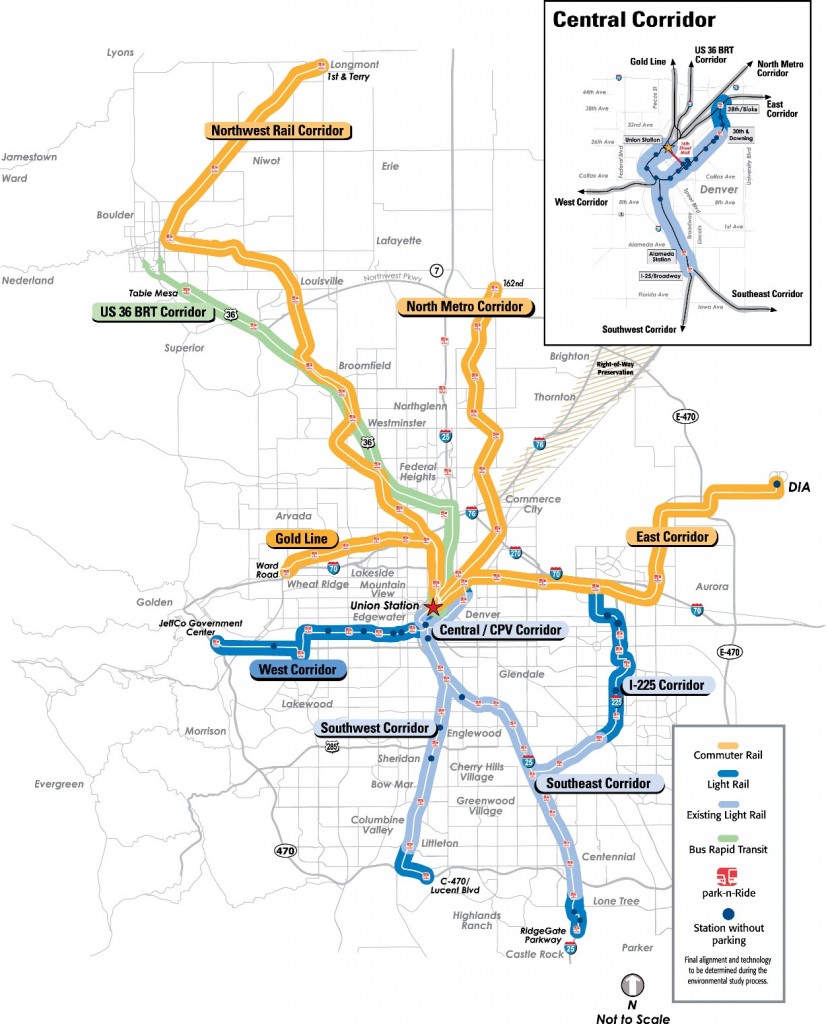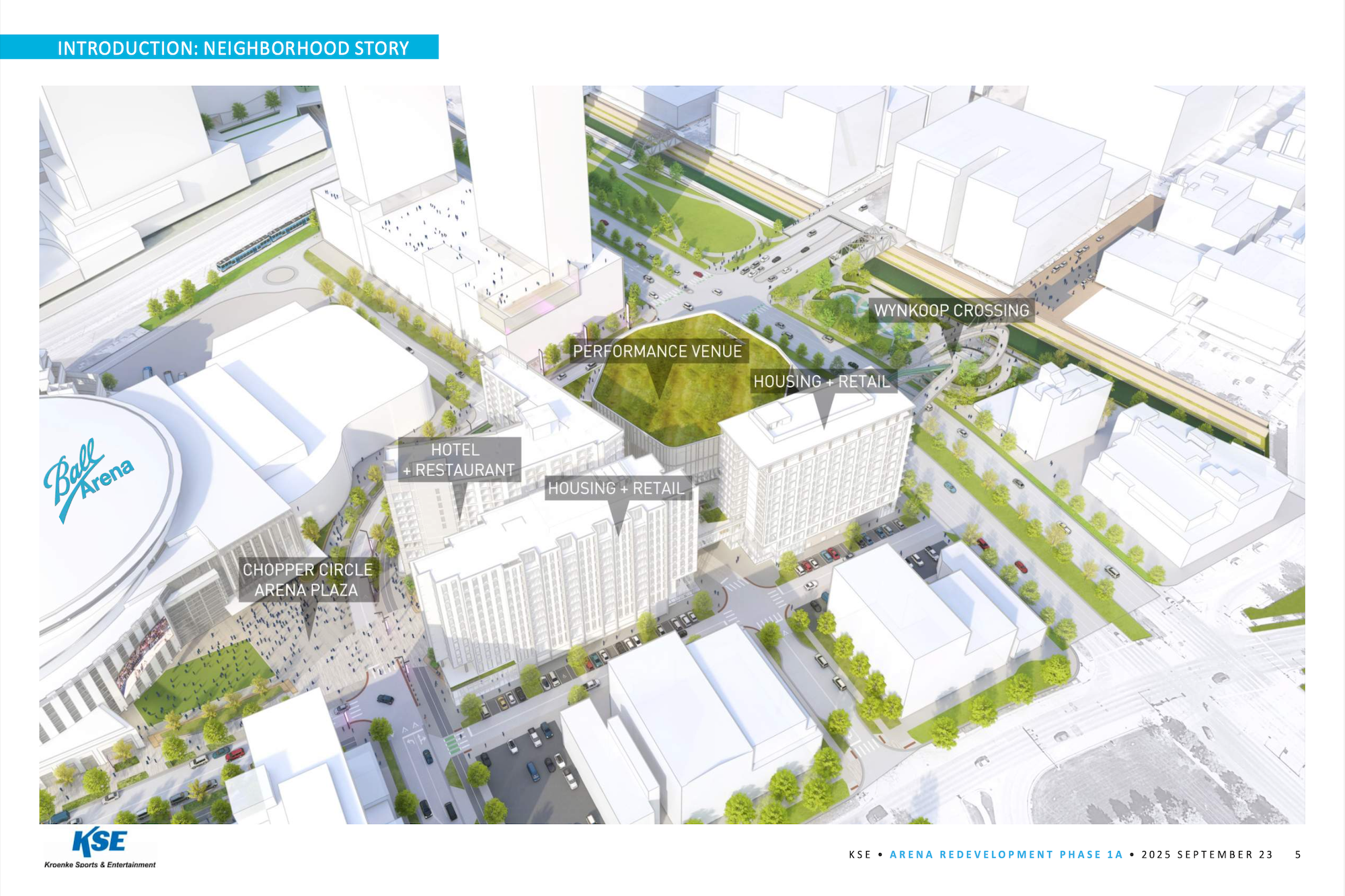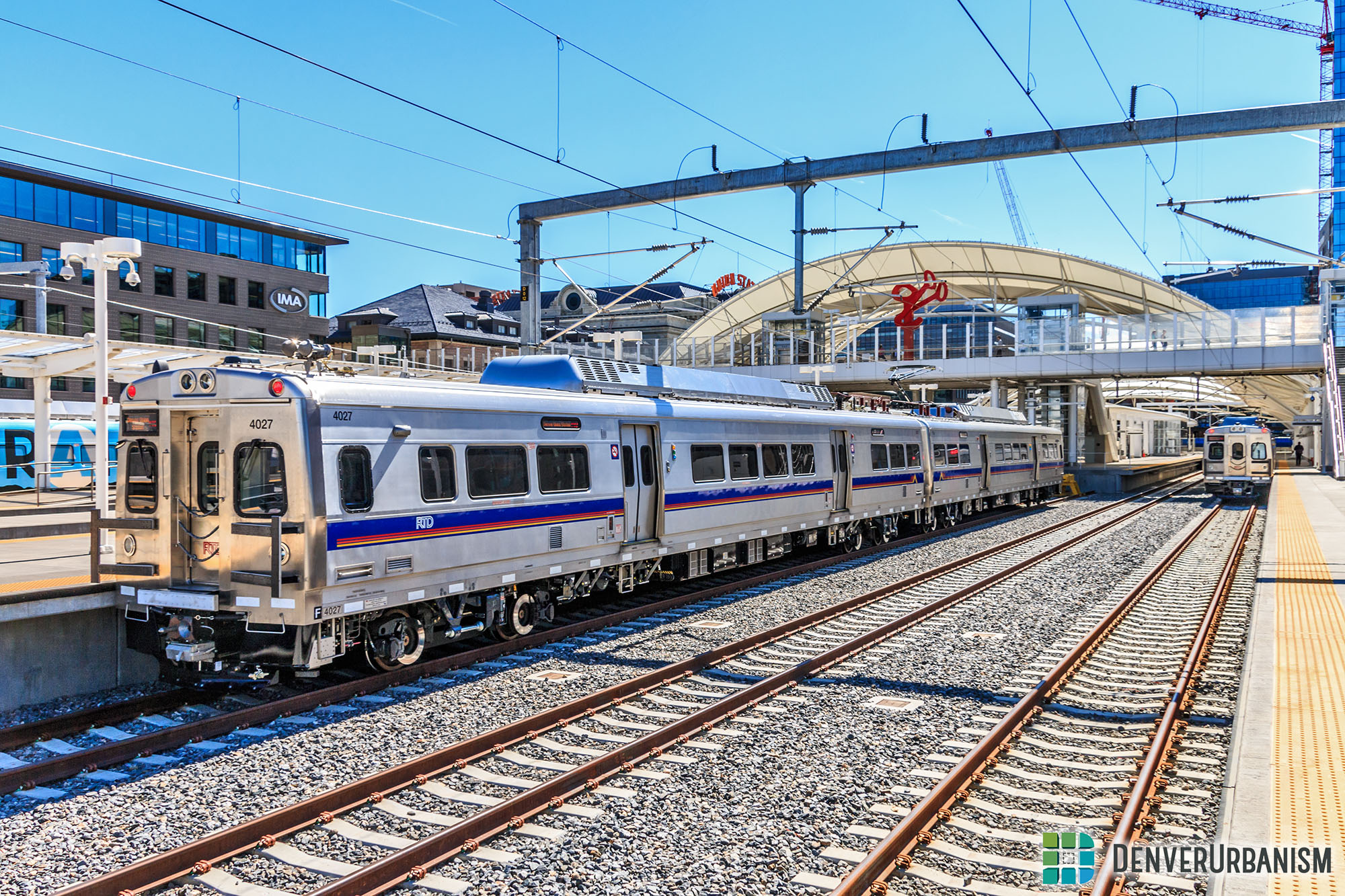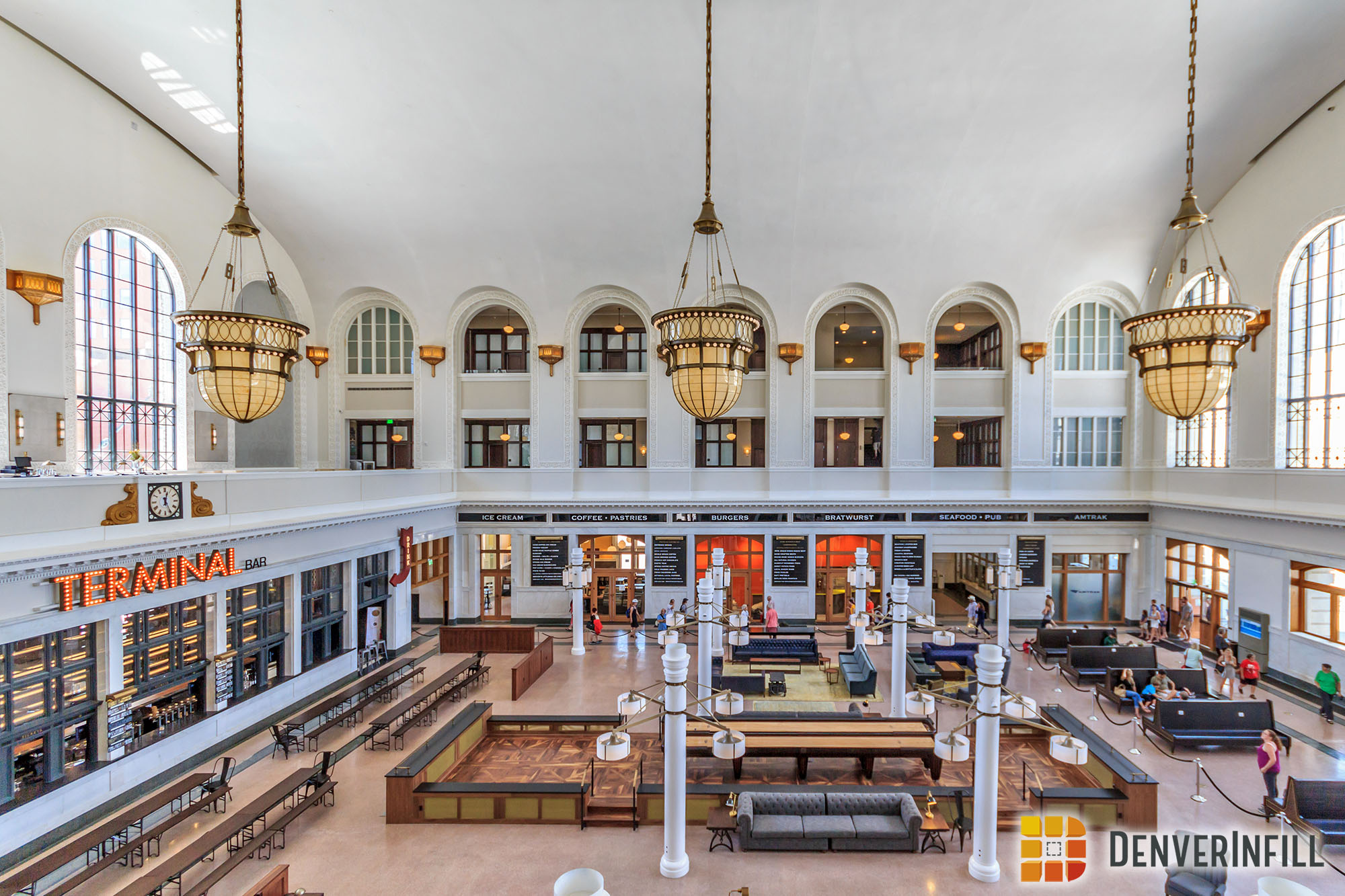Obviously transit is playing a larger and larger role in the metro area, so I think it’s only fitting that my very first transit post is an overview and status update of one of the largest transit expansion programs in the country. I’m sure most of us know the basics, but hopefully there’s some tidbits in here that’ll be new info.
RTD FasTracks is metro Denver’s $6.5 billion regional transportation expansion program made up of nine rapid transit corridors, 31 new park-n-Rides, the redevelopment and reconfiguration of Denver Union Station (DUS) into a truly multimodal transit-oriented development, and the enhancement of the bus network and transit hubs across RTD’s district. The FasTracks program will include 122 miles of new light rail and commuter rail, 18 miles of bus rapid transit (BRT), 21,000 new parking spaces at rail and bus stations and enhanced bus service across the District. See the map below for an idea as to FasTracks’ reach.
FasTracks is made up of several different components. The following transit corridors make up the RTD FasTracks program:
West Corridor: $700 million light rail line connecting Downtown Denver and the Jefferson County Government Center along a new 12.1-mile corridor. The project runs along an old railroad right-of-way acquired by RTD and also serves west Denver, Lakewood, the Denver Federal Center, and Red Rocks Community College at 12 stations.
East Corridor: $1.2 billion commuter rail line connecting Downtown Denver and DIA along a new 22.8-mile corridor. The new rail line will serve east Denver and Aurora on its way to DIA. This project is part of the Eagle P3 project, one of the first transit projects to utilize a public-private partnership (PPP) in the country. (Info on the P3 project is coming in a future blog post)
Gold Line: $517 million commuter rail line connecting Downtown Denver, Adams County, Wheat Ridge, and Arvada along a new 11.2-mile corridor. The project will also be part of the Eagle P3 project.
Northwest Rail: $665 million commuter rail line connecting Downtown Denver, Adams County, Westminster, Broomfield, Louisville, Boulder, and Longmont along a new 41-mile corridor. The commuter rail will run along the same tracks as frequent freight rail service. An initial segment from DUS to 71st and Lowell will be completed as part of the P3 project.
North Metro: $910 million commuter rail line connecting Downtown Denver, Adams County, Commerce City, Northglenn, and Thornton along a new 18-mile transit corridor. The right-of-way for the majority of this corridor has already been acquired by RTD.
I-225 Corridor: $626 million light rail line traveling along I-225 through Aurora from the existing Nine Mile Station north 10.5 miles to the future Peoria/Smith Station along Aurora’s western border with Denver. The corridor will service Aurora’s Municipal Building, the Aurora Town Center, as well as the Anschutz Medical Campus (formerly the Fitzsimons Army Medical Center).
Southeast Corridor Extension: $159 million, 2.3-mile extension of the Southeast Corridor which opened in 2006. The extension will serve Lone Tree’s future downtown, as well as the Sky Ridge Medical Center.
Southwest Corridor Extension: $156 million, 2.5-mile extension of the Southwest Corridor which opened in 2000. The extension will travel south along Santa Fe Drive, through a reconfigured and reconstructed C-470/Santa Fe Drive interchange, and serve Highlands Ranch at a new park-n-Ride at Lucent Blvd. and C-470.
Central Corridor Extension: $65.5 million, 1-mile extension of the Central Corridor which opened in 1994. The extension will travel north along Downing Street and end at 38th and Blake Streets, connecting the Central Corridor with the East Corridor.
US 36 BRT: $23.3 million (Phase 1) project to enhance transit service along the US 36 Corridor between Denver and Boulder. Phase 1 projects included expanded park-n-Rides, pedestrian bridge construction, and installation of slip ramps along the highway. Phase 2 is dependent on CDOT action along the highway.
Since the FasTracks vote in 2004, the program has encountered a number of challenges that are outside of RTD’s control (or anyone’s control for that matter)—namely an increase in the cost of construction materials (concrete, steel, and copper) and a significant decrease in sales tax revenues. Due to these economic challenges, it will require additional revenues from what was originally planned to complete FasTracks in the timeframe promised in 2004. FasTracks is facing a $2.45 billion budget gap brought on by a combination of rising commodity prices and declining sales tax revenues, which are the backbone of its funding mechanism. If RTD does decide to pursue a new sales tax increase, it would take an additional 0.4% (on top of the original 0.4% for FasTracks and 0.6% for general RTD operations) to fill the funding gap. Any new tax would include a sunset provision.
To deliver the program within the next 10 years or so, RTD will need to solve the gap between the project cost and the available revenue brought in by sales tax and other sources. Despite of the budgetary challenge, RTD says they’re committed to delivering the program by 2019. In spite of the challenges brought on by unforeseen economic forces, RTD has been able to initiate construction on several major components of the FasTracks program. The West Corridor broke ground in 2008 with major construction commencing in 2009 and will open for revenue service in early 2013.
I know Rick’s got it covered, but as we all know, DUS broke ground on major reconfiguration and redevelopment activity in March, following a loan package from the Federal Railroad Administration (FRA), Federal Transit Administration (FTA), and United States Department of Transportation (DOT). The entire $500 million reconfiguration is expected to be complete and open for service in 2015.
The RTD Board of Directors selected Denver Transit Partners (DTP) in June as their P3 Concessionaire to deliver commuter rail service to DIA along the East Corridor, Arvada and Wheat Ridge along the Gold Line, Westminster along Northwest Rail, and a new commuter rail maintenance facility. Groundbreaking for the East Corridor is expected sometime in August, with groundbreaking of other P3 components later next year.
By the end of 2010, 47 miles of new FasTracks rail lines will be either under construction or under contract. This will more than double RTD’s existing rail system (currently in operation or under construction) from 35 miles to about 82 miles. By mid-2011, five of the 11 FasTracks projects will be under construction—West Corridor (groundbreaking in 2008), Denver Union Station (2010), East Corridor (2010), Gold Line (2011), and Northwest Rail Electrified Segment to 71st and Lowell (2011).
It’s a HUGE project with HUGE potential to really transform how metro Denver moves. It’s great to see the progress that we’re already seeing—every new project is a big step in the right direction. Let’s hope that the complicated budget situation is resolved soon so they can get these trains running!











Can Someone explain to me why the NW corridor will only be electrified to 71st avenue and why it was included in the 3P? This stub of a rail line seems useless because it only serves one additional station. How will this interact with the NW line when it is built?
South of that station on the northwest corridor they are using separate tracks from BNSF. North of that station they are sharing tracks and the BNSF will not allow overhead electrical wires on the shared track. If they want that station open earlier then the NW it would be cheaper to electrify the few miles separate track then buy Diesel trains that may live out their lifespan before full completion of the NW corridor.
As to why they are building out to that station now I have not seen anything from RTD (and have wondered the same thing) so I can only guess that’s since it’s only a couple miles of easy construction from where it separates from the gold line the cost is pretty minimal and that additional benefit of that one station justifies the cost.
Another guess is that it could also be a PR move to show the taxpayers of that corridor intent to build out eventually since I am betting based on the numbers that the NW rail line will be the last component completed.
When the NW line is built the diesel trains will just go under the wires from every study I have read but I never read the final EIS.
Ryan,
Thanks for the recap – I hadn’t seen a comprehensive take on the project in some time. But isn’t it a disservice to say that the challenges encountered by the project were beyond “anyone’s control”? As a big supporter of transit in Denver, I hope we learn something from the very real mistakes of the FasTracks team. While a significant spike in construction costs certainly played a role in the ballooning project estimate, much of it was due to shortsighted and beyond-optimistic sales tax projections (see a 2009 Denver Post article http://bit.ly/cVTOX3). I certainly don’t expect RTD’s finance folks to predict recessions like the one we’re in now. But, like a new homebuyer, they should be prepared for an inevitable slump or two. Here’s to hoping metro taxpayers are ready to trust RTD again when the vote comes up!
I’m not trying to say that an increase in prices can’t be predicted or expected. It was poor wording on my part now that I look back. There wasn’t one single event that caused RTD to be out of whack.Yes, the sales tax projections were optimistic – and later found to be incorrect. That’s a big problem. But the simple cost of the program is way higher than they thought it’d be as well. So, yes, poor wording on my part. Many factors played into the budget situation, but it wasn’t one person’s fault, one project’s fault, or one event that could have been handled differently and we’d all be looking at a $4.7 billion project right now.
And yes, hopefully RTD taxpayers will be willing to fund the possible increase. We shall see…
I think RTD’s initial projections were definitely overoptimistic and they have to take the blame for that. They projected a 6.2% annual growth rate for revenues over the life of the project. Revenues were already behind projections in 2006, before the recession or housing bubble burst.
Is there any information on how the $300 million “saved” from the Eagle P3 project will be used? In my opinion, it would be better to dedicate it all to one line (I-225) than to scatter it amongst many different lines.
It’s a video, by golly.
http://www.youtube.com/watch?v=zhVncPiuZ-M
very excited for this project. it is fascinating to see denver grow without transforming itself into an la-like mass. with this project completed, we will have arguably one of the best transportation systems of any large US city.
I suspect it’s the terrain, but was there ever any reason cited why neither the Gold Line nor the west line doesn’t continue into downtown Golden? That would seem to be a logical end-point.
The West Line goes to the Taj Mahal, which is Golden’s access.
But is that walking distance to Coors?
You could walk it – there’s certainly ways to get there, but it’s not something many (if any) people will be doing. It’s certainly not walking distance – looking from Google Earth, its about 2.5 miles away, approaching 3 on certain paths you could take.
Not sure. I agree, it would make a logical endpoint (or possible future development), but I have heard that there will be a shuttle from the Jeffco Center to downtown Golden. I guess it will be a nice temporary solution…
A shuttle will just add to the already lengthy (in my estimate) commute time. A logical end point would have been the School of Mines. But then again, at least something is being built out west…
I know the 17 bus line currently runs in a loop from the Taj Mahal to downtown Golden to some neighborhoods and back to the Taj Mahal. It runs pretty frequently, and has a stop in the heart of downtown Golden as well as right in front of Coors.
RTD purchased ROW to downtown golden for the gold line but it isn’t part of the Fastracks plan.
I suspect it was budget constraints. All but the last couple of stops on the West line were cheap because there is existing ROW with existing tracks already removed which makes everything from securing rights, to grading, to doing environmental impact statements much cheaper. There was considerable debate over going as far as the Taj, but it was felt to be necessary to be credible.
Golden also already has a disruptive regional ROW issue to deal with involving the completion of the 470 loop through it. So there was an activated NIMBY, anti-new projects constituency organized in the area. Not including a stretch to Golden downtown defused that potential source of JeffCo opposition to FasTracks.
Ken, Why don’t you have a contest to name Denver’s rail system. Calling it “light rail” is sort of corny. Besides, that’s a technical term. Even if it’s called the “Metro” it would be better.
I agree. I’m a big advocate for naming our transit system simply the Metro.
“Since the FasTracks vote in 2004, the program has encountered a number of challenges that are outside of RTD’s control (or anyone’s control for that matter) – namely an increase in the cost of construction materials (concrete, steel, and copper) and a significant decrease in sales tax revenues.” True, but RTD’s terrible projections are also a big part of the financial woes of this project. But as always, their answer is to raise taxes.
Propose an alternate answer to fun FasTracks and I’m sure all of us commenting here would be happy to look at it.
Bus routes. Cheaper and much more flexible.
Start taxing drivers through a gas tax, highway tolls, or something similar. Highways, driving, etc. are subsidized at an astounding level by the government. In the spirit of free markets, perhaps its time to make drivers foot more of the costs associated with their lifestyle choice.
Light rail is heavily subsidized as well. Gas is already taxed at over $.40 per gallon in Colorado (fed, state and sales taxes combined). The theory of federal and state gas taxes is to pay for the roads, but the politicians steal that money for other purposes, leaving too little funding to maintain them.
*fund
Denver needs a mass transit system for its neighborhoods rather than spending hundreds of millions on getting people from a parking structure on the highway to downtown. The current plan does little to reduce dependence on the automobile outside of the CBD and maybe a couple of other stops. However, at least there is a plan to get rail to DIA so there are some steps forward. Maybe one day super dense areas will be built around the current and planned FasTracks stops, but I don’t really see it happening in the next 30 years, nor do I want density to be moved away from downtown. Sigh…
With the addition of the Southeast Corridor, transit also serves the Metro area’s “other downtown” in the Denver Tech Center and the Park Meadows mall. The Northwest Corridor will add the Broomfield and Boulder work centers.
As the system builds out, it will be possible to have a hub and spoke system of shuttles that get people from their neighborhoods to the nearest rail station and from there to work and back. This has the potential to make not taking a car to work viable for a large share of people in the Metro area who work in major office centers and stay in their offices all day rather than traveling during the day.
It doesn’t eliminate the need to have a car at all outside a few areas, and realistically, there are only half a dozen cities or so in the United States where that is possible now (NYC, Boston, Philadelphia, Portland (OR), and San Francisco), and even in those cities it is possible only for a minority of metro area residents. Internationally, London, Paris and most of Japan’s major cities meet this standard, and I’m sure there are a few other cities that I’ve missed, but there aren’t many cities the size of Denver that do.
But, the built out system will rival or exceed Washington D.C., Seattle, Los Angeles, and Chicago in providing decent commuter rail and some light rail without comprehensive non-car living.
The other thing that FasTracks does does is make it much more viable for a lot of families with two cars, and some suburban iconoclasts with just one car, to have a fairly short range scooter or purely electric vehicle that they could use to make trips to the light rail station, to buy things from nearby stores, drop the kids off at neighborhood schools, etc.
I also wouldn’t be so discouraged. Denver already has some of the highest density suburban development and some of the largest percentages of new development in the form of infill, of any major metro area in the U.S. While the metro area isn’t obviously landlocked except to the West (where the mountains limit development), the limited supply of new water taps creates an invisible growth boundary.
There also also additional scales of progress. Street cars are being considered to replace express bus lines on major arterial routes like Broadway and Colfax and Colorado Boulevard. And, high speed rail looks fairly viable in the parts of the I-25 and I-70 corridors, potentially connecting a lot of bedroom communities and small towns to a statewide rail network.
Much of suburban Denver is built in at sufficient low densities that it will probably not be viable to have automobile optional communities there for decades (at least until we have alley houses in whole subdivisions), but projects like Belmar and Cinderella City suggest that making these kind of communities an option of many in the suburbs in not impossible.
It is beyond me why the FasTracks plan does not include Fort Collins. This could be a giant potential to add to economic ‘mobility’ in connecting FC, Longmont, Boulder, Denver, and Golden… I know a number of commuters from the Fort down to Denver everyday, and a rail line would simply be amazing down the I-25 corridor north of denver, as well as an extension from Longmont up by Loveland and into Fort Collins. To me, this should have been the first move in the system, connecting the three main city centers of Fort Collins, Boulder, and Denver…
High speed rail lines from Fort Collins to Colorado Springs have been studied in detail and are the most economically viable of the high speed rail proposals in the state, because it is much cheaper to build high speed rail in the I-25 corridor than in the I-70 corridor from DIA to Vail, and because the population density (and hence presumed high speed rail traffic) is high in this corridor.
RTD can’t do that, however, because its jurisdiction is not statewide.
Details here. The costs break down as follows:
(1) DIA to Colorado Springs Airport with eight stops and twenty to twenty-five trips per day ($3.32 billion),
(2) Downtown Denver to Copper Mountain with eleven stops and twenty-five trips per day during ski season ($9.55 billion),
(3) Denver to Fort Collins with two stops and Colorado Springs to Pueblo with a single new stop each served by eighteen trips per day ($4.1 billion which breaks down as Fort Collins $2.1 billion; Pueblo $2.0 billion), and
(4) Copper Mountain to Eagle with three new stops, and a spur route to Blackhawk with a single stop each served by about eighteen trips per day ($4.15 billion which breaks down as Copper Mountain to Vail $1.75 billion; Vail to Eagle $1.69 billion; Blackhawk $0.91 billion).
“To deliver the program within the next 10 years or so, RTD will need to solve the gap between the project cost and the available revenue brought in by sales tax and other sources. Despite of the budgetary challenge, RTD says they’re committed to delivering the program by 2019.”
Commitment without ability isn’t very convincing. I’ll be happy if construction is continuous and the project is completed eventually. I would be very surprised if it was finished in 2019. This isn’t going to be a politically attractive pool of money to raise until gas prices surge again.